OCAD’s annual GradEx show, which features work by over 500 emerging artists, is a wonderful event to discover local talent and find art for your home. But it’s also fascinating to look at the exhibition as a whole, and see what themes emerge.
This year, more than others, we noticed that many students we’re exploring their heritage—from using art as a way to deepen their understanding of self and identity, to creating pieces that fight racial stereotypes. As it is Asian Heritage Month, we connected with a few students whose work draws from their Asian culture.
mihyun maria kim is a Korean-Canadian interdisciplinary artist who has participated in several group shows in Toronto (Queen West Art Crawl, Kensington Market Art Fair, Riverdale Art Walk); and this past year mihyun maria was a resident artist at the AKIN x Collision Gallery. Her work in OCAD’s Grad-Ex show explores the Korean word “Han”, which describes a sense of one’s loss, grief or shared suffering. There is no word like it in the English language.
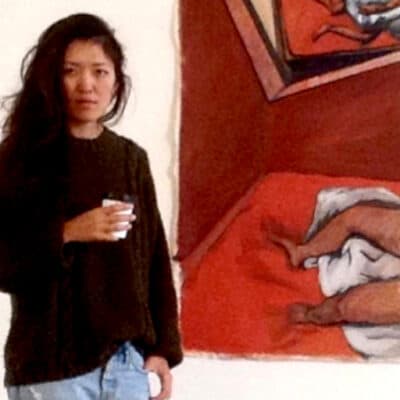
Artist mihyun maria kim.
Powerful and haunting, mihyun maria’s work is mixed media that includes old family photos, crayon, oil pastel, Hanji-Korean handmade paper, that comes from bark, and sealed with beeswax. Each piece in the series tells a story that transcends time. We connected with mihyun maria to find out what led her to this exploration.
What inspired this series?
In recent years, I have been processing histories of individual and collective experiences with personal reference to transgenerational trauma (especially of divorce, immigration, war, class divide and poverty), fragmented memory, distorted identity, and contrasting sociocultural norms. These interests were born from trying to understand a Korean word, “han”, which describes shared suffering, or someone who carries grief or a longing of a person, place or time that exists in the past or future, escaping the present. Saudade (Portuguese), kaiho (Finnish), morrińa (Galician), sehnsucht (German), and lakhtara (Greek) are similar expressions, but there is no direct translation to English, as no word in English specifies a kind of grief that relates to past experiences, history, emotions and the psychological shifts in individuals and society that are contained within it.
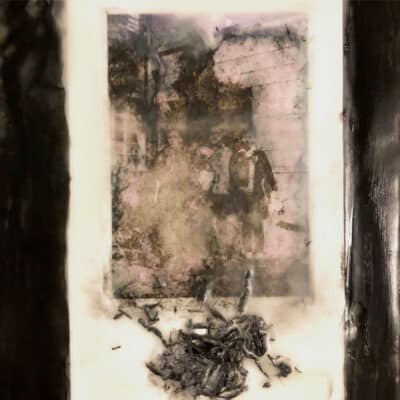
Burning by mihyun maria kim
While reading on memory and time, both being perpetually shaped and affected by present understandings, I used methods of additive and reductive hand gestures to transfer and transform the images. As rubbed bits and traces of mark-making got sealed and preserved in beeswax, the finite qualities of the image intensified the ephemeral nature of memories. The materials make it possible for a future excavation to occur, and the image to be reworked, with new layers and materials to be added, or for it to remain at a crystallized moment in time.
What conversations or ideas do you hope this works inspires?
That everyone has a story, with some parts missing, others exaggerated, at moments filled with laughter, and others with tears. We are born into it and leave it to continue beyond ourselves, and while we are able to tell it, there is time and space for each to be told and heard.
Have you been thinking about your heritage differently this year than in the past? If so, how?
It has been a time of transition, gaining small realizations through self-reflection and deep consideration to the intergenerational experiences of my family. Looking at the objects passed down from those who came before me, and how these are cared for and carried by family members. I have been questioning what has been sacred, valued, shared and protected to better understand my own rituals, habits and ways of thinking. Listening, to notice how these influence and impact my interactions with the place and people I daily engage with. In a time of socio-political upheaval and emphasis on differences, I returned to human experiences, endurance, resilience, perseverance and togetherness through respect and compassion.
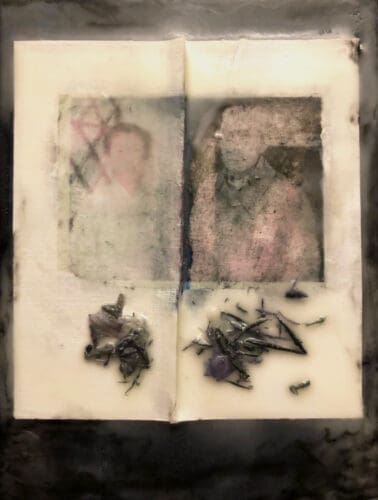
Lovers by mihyun maria kim.
What part of your heritage are you most proud of / enjoy celebrating?
Having left Korea as a child, I recognize and celebrate the unity Koreans almost immediately form with each other. There is a deep sense of community, brother/sisterhood, shared responsibility, and togetherness that is most natural and built into the ways we communicate and share our experiences with one another.
What part of your heritage do you think is misunderstood? Or do you wish people knew more about it?
Korea is a divided nation. There are families and lands disconnected further with time passing. A long history of oppression and a short time of economic rise created a certain value set, work ethic, and need for speed. Many people know Koreans say “hurry up, pali-pali”, and perhaps a look into the last few decades would give one insight to why this mentality exists.
What is the greatest lesson you’ve learned while at OCAD U?
I have learned that one owns their experience, to trust oneself, to explore, and to stay curious. Through the years, I have learned that creatives are hard working, passionate, resilient and resourceful, reflecting the tight-knit community built by faculty members, mentors and peers- a place of acceptance, inclusivity, compassion and wisdom.
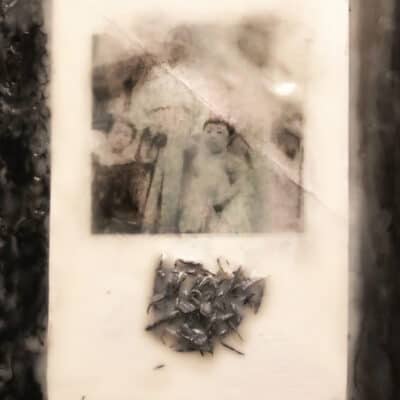
Abducted by mihyun maria kim.
What do you love most about the GradEx show?
This year was the first full year of remote learning, and Grad Ex 106 is a place where we all come together to share what we have been working on and to celebrate our final year in our programs. It shows our resilience to adversity, and our traditions to be stronger than uncertainty.
This is the first post in a series that will share how artists in OCAD’s GradEx show are exploring Asian heritage through art. If you haven’t already checked out the show, you really ought to check it out.


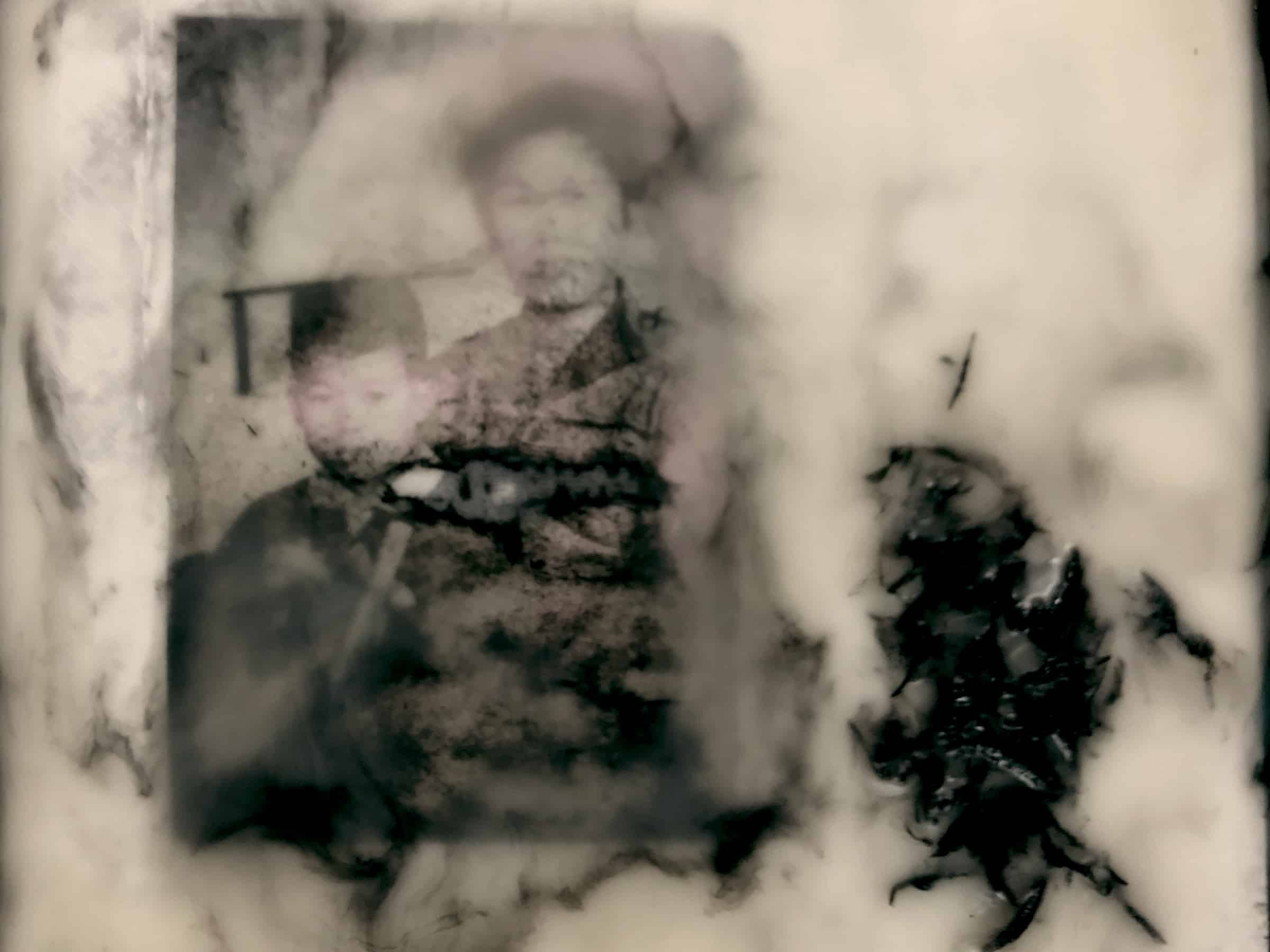

 Follow Us On Instagram
Follow Us On Instagram
